Myofunctional therapy is a program of specific exercises that target the facial muscles. The exercised-based therapy focuses on the mouth, tongue, and face muscles. These exercises are designed to develop, improve, and promote proper breathing, chewing, and swallowing. These exercises do strengthen the tongue. Below are frontal and side views of good normal growth and development of the orofacial structures.
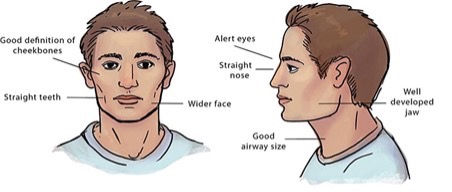
The oropharynx is the part of the body that includes the mouth and throat. In simple terms, it is a tube lined with muscular tissues. This includes the back third of the tongue, the soft palate, the side and back walls of the throat, and the tonsils. These muscles help us to eat, talk, and breathe. They also help to keep the airway open, especially during sleep.
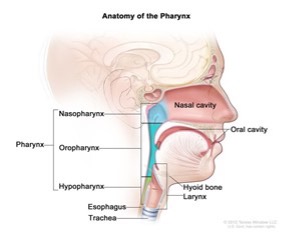
When the muscles of the oropharynx are weak, they may disrupt the flow of air and creating problems with speech, swallowing, and breathing. This is evident with mouth breathers and snoring while sleeping. During sleep, the muscle (a floppy tongue) collapses and the airway becomes blocked. This is the gasping effect as happens during sleep apnea. A weak and floppy tongue falls back into the throat and create an obstruction.
Possible Causes:
Delayed Neuromotor Development: The abnormalities found in the orofacial muscles and structural differences can lend to some problems. This can be seen with the slow growth of the cheekbones and jaw.
Obstructive Airway: this could be from expanded tonsils, a deviated septum, or allergies. These issues effect the flow of air through the nasal airway. In turn, this can cause the jaw to change to an improper position causing adaptation to mouth-breathing since the nasal airway is obstructed.
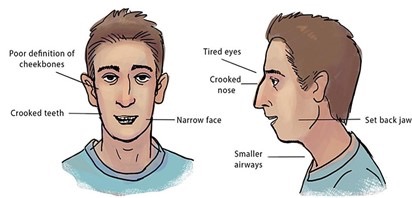
Thumb-Sucking or Prolonged Bottle Use: Habitual sucking or bottle use after the adult teeth have come in can cause problems for the development of the jaw placement and the primary teeth (adult teeth). This change in growth patterns can cause malocclusion of the teeth as shown below. In addition, with the change in growth pattern then a change in the jaw line can be seen. The tongue can also lose its appropriate position and effect the way food or liquids are swallowed.
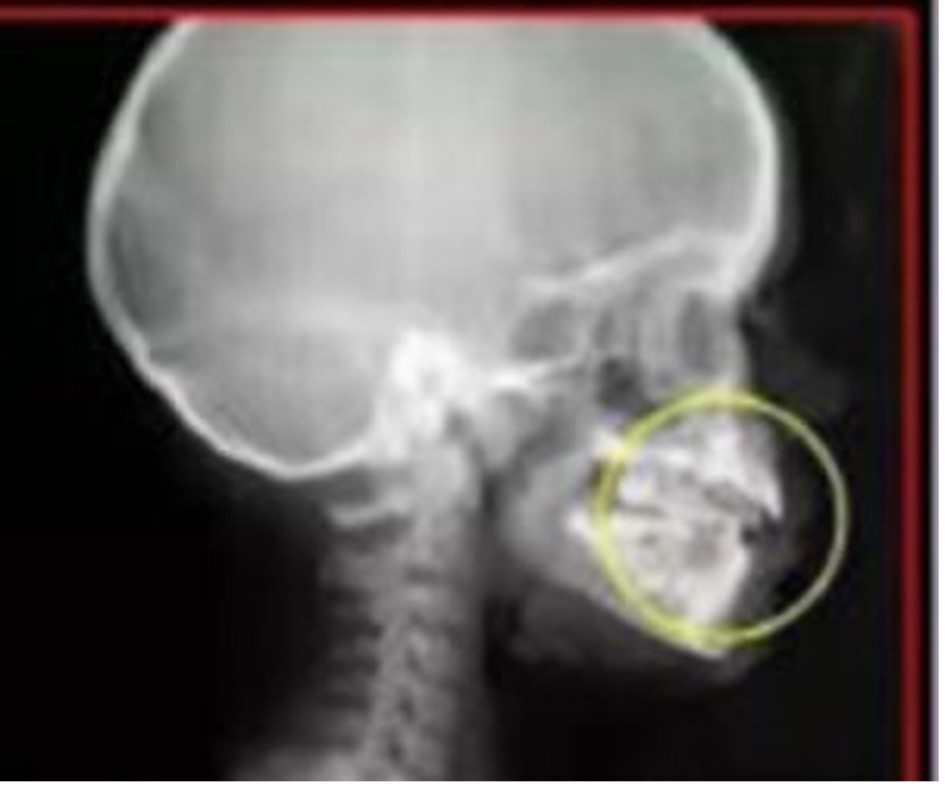
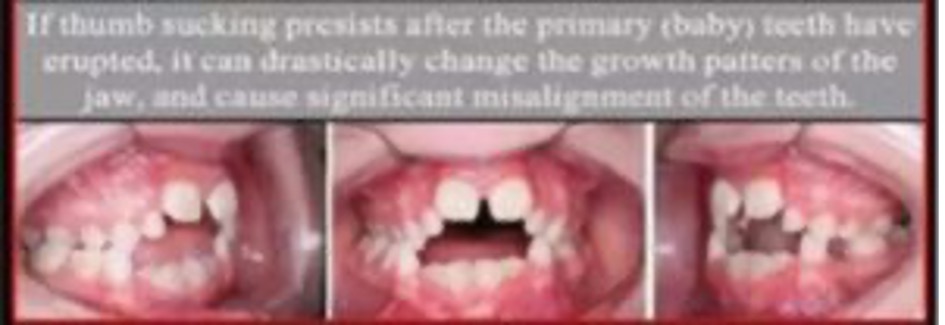
Possible Symptoms:
Mouth-Breathing: This occurs when a person’s nasal passage obstructed thereby causing breathing from the mouth.
Bruxism: A medical condition in which a person grinds or clenches their teeth, unconsciously. This can occur while asleep or awake.
Facial Discomfort: Facial pain around the jaw muscles area, or surrounding muscles and the experience of headaches can occur.
Malocclusion: Misalignment of the teeth causing crowding or no space for new teeth to erupt. This creates a poor bite.
Tongue Thrusting: Habitual pushing forward of the tongue between the upper and lower teeth while swallowing or talking. This is improper usage of the tongue as it should push against the gum above the back of the upper front teeth.
Sleep Apnea: This disorder causes a breathing to repeatedly stop and start while asleep. Most common cause is the muscles (in the throat) irregularly relax and block the airway.
Speech Problems: Since the tongue is not positioning correctly, the inability to pronounce words correctly can occur.
Possible Solutions:
Myofunctional therapy includes exercises that are meant to improve the strength of the muscles within the oropharynx, including the tongue. In addition, it helps to reinforce the proper position of the tongue within the mouth.
Sleep specialists use myofunctional therapy to improve breathing problems during sleep, especially in children. Moreover, it is used by dentists concerned about the movement of teeth that occurs when the tongue continually pushes against teeth. The tongue normally rests with its tip placed against the hard palate, just behind the front teeth.
For our sleep patients, myofunctional therapy is an attractive compliment with sleep treatment. There is some evidence that it can decrease sleep apnea severity. Research demonstrated a decrease in the apnea-hypopnea index (AHI) from 24.5 to 12.3, dropping severity from a moderate to mild level. It may also decrease snoring and daytime sleepiness. Fortunately, the treatment is non-invasive, inexpensive, and has no major risks. The goal being to avoid the use of Continuous Positive Airway Pressure Machine(CPAP) or surgery
The therapy has been used in other conditions beyond sleep apnea. It may benefit those who suffer from a variety of ailments, including:
- Headaches
- Gastroesophageal Reflux Disease (GERD, also known as Heartburn)
- Temporomandibular Joint (TMJ) Pain
- Neck Pain
- Thumb Sucking
- Nail Biting
Rather than turning to the use of medications, an alternative is myofunctional therapy. This relies on exercises that have few risks and may be quite beneficial.
